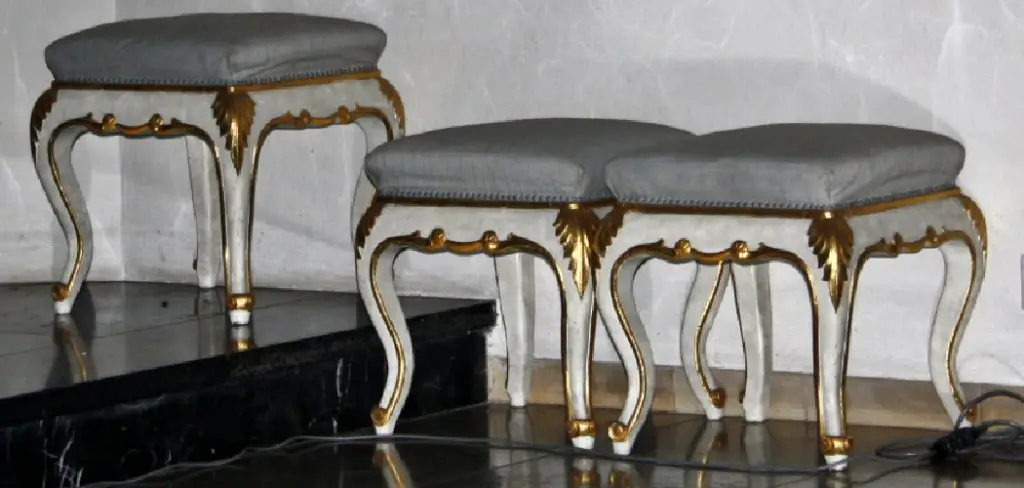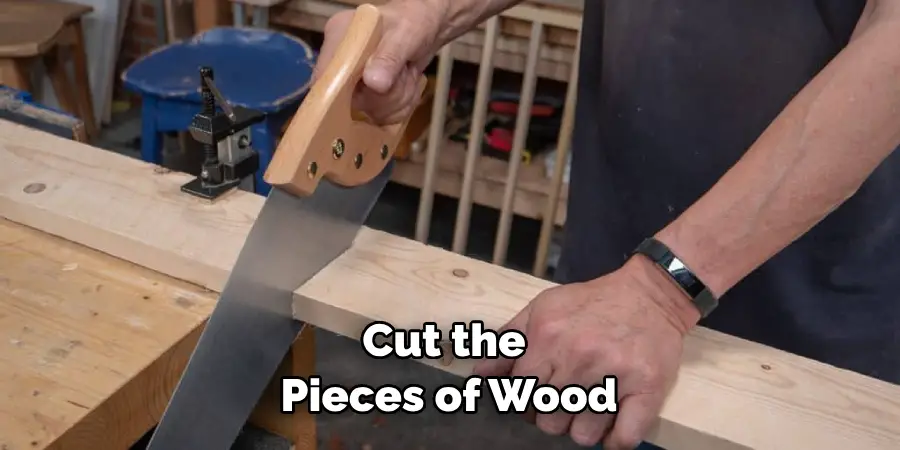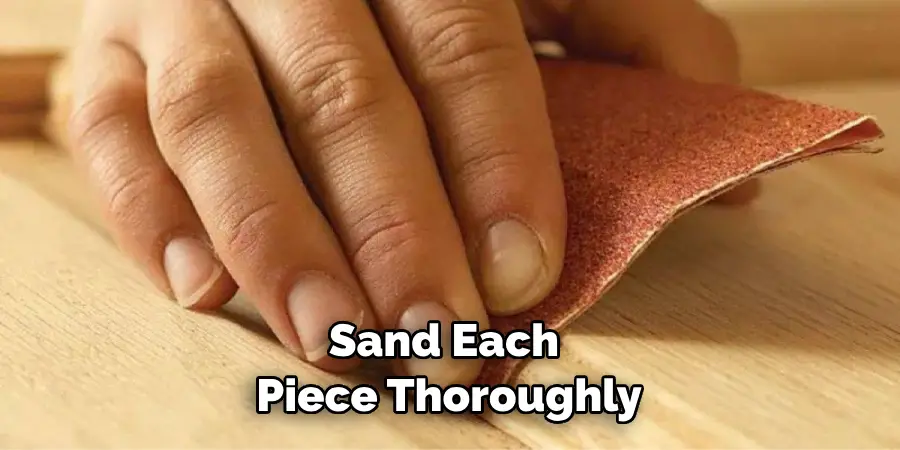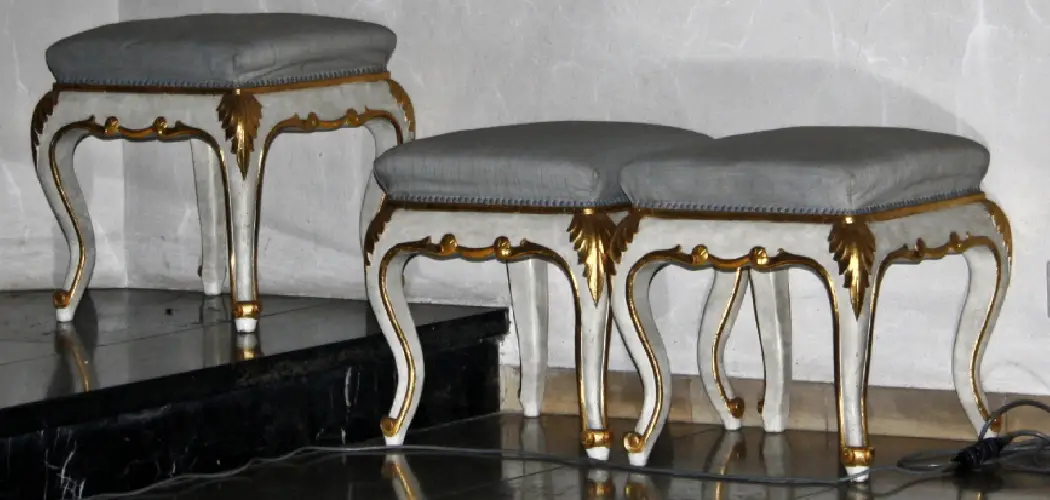Are you looking for an easy way to add comfort and convenience to your home? If so, making a footstool is the perfect project! Footstools can be placed near couches or armchairs to provide a comfortable place to put up your feet, as well as offering extra seating when needed. Here, we’ll go over all of the steps involved in creating a stylish handmade footstool that will become a treasured part of any room.

For many DIY enthusiasts, the thought of making a footstool may sound overwhelming. But with just a few simple steps, you can easily make your own unique piece of furniture that not only looks stylish but is also extremely comfortable and functional. From selecting the right material to fabricating and finishing it – this guide explains how to make a footstool that will be truly cherished by all who use it!
Why May You Want to Make a Footstool?
1 . To Add a Personal Touch to Your Furniture
If you are someone who loves adding a personal touch to everything in your home, then making a footstool is definitely for you. You can choose the fabric, design, and style of your footstool that complements the rest of your interior decor.
2 . To Save Money
Buying furniture can be expensive, especially if you are looking for high-quality and stylish pieces. Making your own footstool can save you a significant amount of money, as you only need to purchase materials instead of a fully constructed piece.
3 . To Learn a New Skill
Making a footstool is an excellent way to learn new skills and expand your knowledge about furniture making. You can experiment with different techniques and materials, allowing you to develop your creativity and problem-solving skills.
4 . To Create a Unique Piece
By making your own footstool, you have the freedom to design it however you want. You can create a one-of-a-kind piece that reflects your personality and style. This way, you won’t have the same generic footstool as everyone else.

How to Make a Footstool in 5 Easy Steps
Step 1: Gather All The Tools
The very first step is to gather all the necessary tools and materials before you start building your footstool. You wouldn’t want to run back and forth, searching for a tool in the middle of your project. Some essential tools you will need include a saw, sandpaper, drill, screws, and measuring tape.
Step 2: Plan Your Design
Before cutting any wood or starting any construction, it’s essential to have a clear design plan in mind. You can either choose from pre-made designs or come up with your own unique one. Consider the size, height, and shape of the footstool as well as the type of wood you will use.
Step 3: Cut The Wood
Using a saw, cut the pieces of wood according to your design plan. Make sure to measure accurately and cut carefully to avoid any mistakes.
Step 4: Sand The Wood
After cutting the wood, it’s time to sand each piece thoroughly. This will help smooth out any rough edges and make the wood easier to work with when assembling. Also, make sure to sand each piece equally for a cohesive look.
Step 5: Assemble and Finish
Once all the pieces are cut and sanded, it’s time to assemble them together using a drill and screws. Follow your design plan carefully, making sure each piece is in its correct place. After assembling, you can choose to paint or stain your footstool for a more finished look.

Some Extra Tips to Make a Footstool
1 . Do Not Be Afraid to Experiment
Making a footstool is all about unleashing your creativity. Do not be afraid to experiment with different fabrics, colors, and designs. This will help you create a unique piece that stands out.
2 . Use High-Quality Materials
While making your own footstool can save you money, it’s important to invest in high-quality materials. This will ensure that your footstool is durable and long-lasting.
3 . Follow Tutorials or Join a Class
If you are new to furniture making, it’s always helpful to follow tutorials or take a class. This will give you a better understanding of the process and help you avoid common mistakes. Also make sure to watch videos on how to make a footstool, as visual aids can be extremely helpful.
4 . Don’t Rush the Process
Making a footstool is not something that can be done quickly. Take your time and go through each step carefully. This will ensure that you have a high-quality end product that you can be proud of. Remember, practice makes perfect. So don’t rush and enjoy the learning process.
Frequently Asked Questions
What Precautions Should You Take Before Starting Your Footstool Project?

Before starting your footstool project, you should take some precautions to ensure that the process goes smoothly: First and foremost, it is important to carefully measure the space where you plan on placing your footstool.
This will determine the size and dimensions of your footstool. Once you have determined the size, make sure to select a sturdy and durable material for your footstool frame. Additionally, gather all necessary tools and materials before beginning the project to avoid any delays or interruptions.
What Are Some Common Materials Used in Building Footstools?
The most common materials used in building footstools are wood, metal, and plastic. Wood is a popular choice for its strength and durability, but can also be more difficult to work with. Metal is another sturdy option, but may require specialized tools and expertise. Plastic is a lighter and more affordable material, but may not be as durable in the long run.
How Can I Customize My Footstool?
There are many ways to customize your footstool to make it unique to your personal style and needs. You can choose from a variety of fabrics for the cushion, such as leather, cotton, or velvet. You can also add decorative elements like buttons or piping to give your footstool a more personalized look.
Additionally, you can paint or stain the frame of your footstool to match your existing furniture or add a pop of color. The possibilities for customization are endless!
Are There Any Safety Concerns When Making a Footstool?
Safety should always be a top priority when making any piece of furniture, including footstools. Make sure to properly secure all joints and connections to ensure the stability and strength of your footstool.
If using power tools, always follow safety precautions and wear protective gear. It is also important to choose the right materials for your footstool, taking into consideration weight limits and potential hazards such as splinters or sharp edges.
Can I Make a Footstool Without any Prior Woodworking Experience?
Yes, you can definitely make a footstool without prior woodworking experience! There are many DIY tutorials and step-by-step guides available online that can help you through the process. You can also consider enrolling in a woodworking class or workshop to learn the necessary skills and techniques. With patience, determination, and some basic tools, anyone can successfully make their own footstool.

What are Some Additional Tips for Making a Footstool?
- Take your time and double-check all measurements before cutting any materials.
- Consider using a foam cushion for added comfort.
- If painting or staining your footstool, make sure to properly prep the wood surface beforehand.
- Don’t be afraid to get creative and add your own personal touches!
- And most importantly, have fun with the process! Making a footstool can be a rewarding and enjoyable DIY project. So put on some music, grab your tools, and get started on creating a unique and functional footstool for your home.
Can I Use the Same Techniques to Make Other Furniture Pieces?
Absolutely! The techniques used in making a footstool can be applied to a variety of other furniture pieces such as ottomans, benches, and even chairs. With some adjustments and modifications, you can use your newfound woodworking skills to create all sorts of custom furniture for your home.
So why stop at just making a footstool? The possibilities are endless! Keep challenging yourself and let your creativity shine. Who knows, you may end up with a whole set of handmade furniture for your home.
Conclusion
Milk paint is a wonderful way to add unique colors and character to your furniture! Your furniture transformation will be made simpler, as you don’t need extra tools or skills to work with this kind of paint. With the right preparation and technique, your piece of furniture can be given brand new life using milk paint.
Now you know how to make a footstool! Doing this project yourself is a satisfying experience that will see your furniture given new beauty in the colors you choose. It allows for an artistic expression that will make a stunning finished product.
If you ever stumble across an old piece of furniture that needs updating, consider utilizing this special kind of paint. You’ll be surprised how quickly an ugly piece of wood can become something you treasure!

